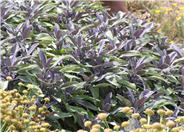
Common name:Purple Garden Sage
Botanical name:Salvia officinalis 'Purpurascens'
This perennial sage has a mounding, spreading habit growing to about 1 to 2 feet tall and 3 to 4 feet wide. New foliage emerges purple, ages to grey-green, and is highly aromatic. Flowers are blue and appear in May and June. Purple garden sage is semi-evergreen to evergreen. The foliage and flowers are edible. Also attractive to bees, butterflies, and hummingbirds.
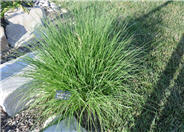
Common name:Fountain Grass
Botanical name:Pennisetum alopecuroides
Fountain grass is a group of warm-season, clumping grasses with graceful forms and early plumes. Foliage is fine-textured and green, with the leaves 1/4 to 1/2 inch wide and up to 30 or so inches long. The form is dense, upright, and mounded, growing from 1 to 3 feet tall and wide, and a little taller while in bloom. Fountain grass tend to bloom before Miscanthus and Panicums, usually by mid-July. Flowers are fox-tail-like and plump, and range in colors from white, cream, pinks, to nearly black. Flowers tend to shatter, but foliage persists into winter.
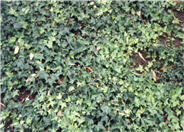
Common name:English Ivy
Botanical name:Hedera helix cultivars
English Ivy is a self-clinging vine used as a groundcover or climbing vine. Though usually green, with lobed leaves, there are many varieties of ivy with variations in leaf size, shape, and color (some ivies have variegated leaves with margins or splotches of white, yellow, or red). All ivies are evergreen but not all are winter-hardy, so check the plant label. A bit slow to establish in our region, once it gets going it spreads quickly up walls, chain link fences, or over the ground. It is praised for its ability to cover an area quickly but loathed by others for the very same reason.
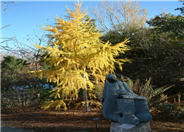
Common name:European Larch
Botanical name:Larix decidua
European Larch is a uniques tree in that it is a deciduous conifer. It can grow 60 feet or tall, and about 20 or more feet wide. It has graceful horizontal branches that have smaller, weeping branchlets. Needles emerge in the spring and are a soft green; autumn color is a brilliant yellow before needles drop. Pinecones are small and brown; bark is greyish brown with elongated plates revealing an inner red bark as tree matures. Useful as a specimen to scree a view.
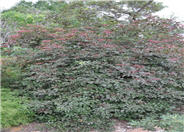
Common name:Thundercloud Elderberry
Botanical name:Sambucus nigra 'Thundercloud'
Thundercloud elderberry is a deciduous shrub that grows 6 to 10 feet tall and wide. The leaves are pinnately compounded, and of an extraordinary blackish-burgundy color. May/June flowers are whitish-pinkish and grow in clusters that eventually give way to edible blue berries. Berries are loved by birds, but they are also good for making jams, jellies, and wine. Useful as an accent, in low spots in the garden that collect excess water. Tolerates dry shade. Foliage is fabulous in arrangements.
| Designer: | Green Corner 3 |
Photographer: GardenSoft |
Water Saving Tip:
Apply a layer of mulch around plants to reduce moisture loss.
Choose organic mulches, such as shredded bark, compost or aged sawdust.
